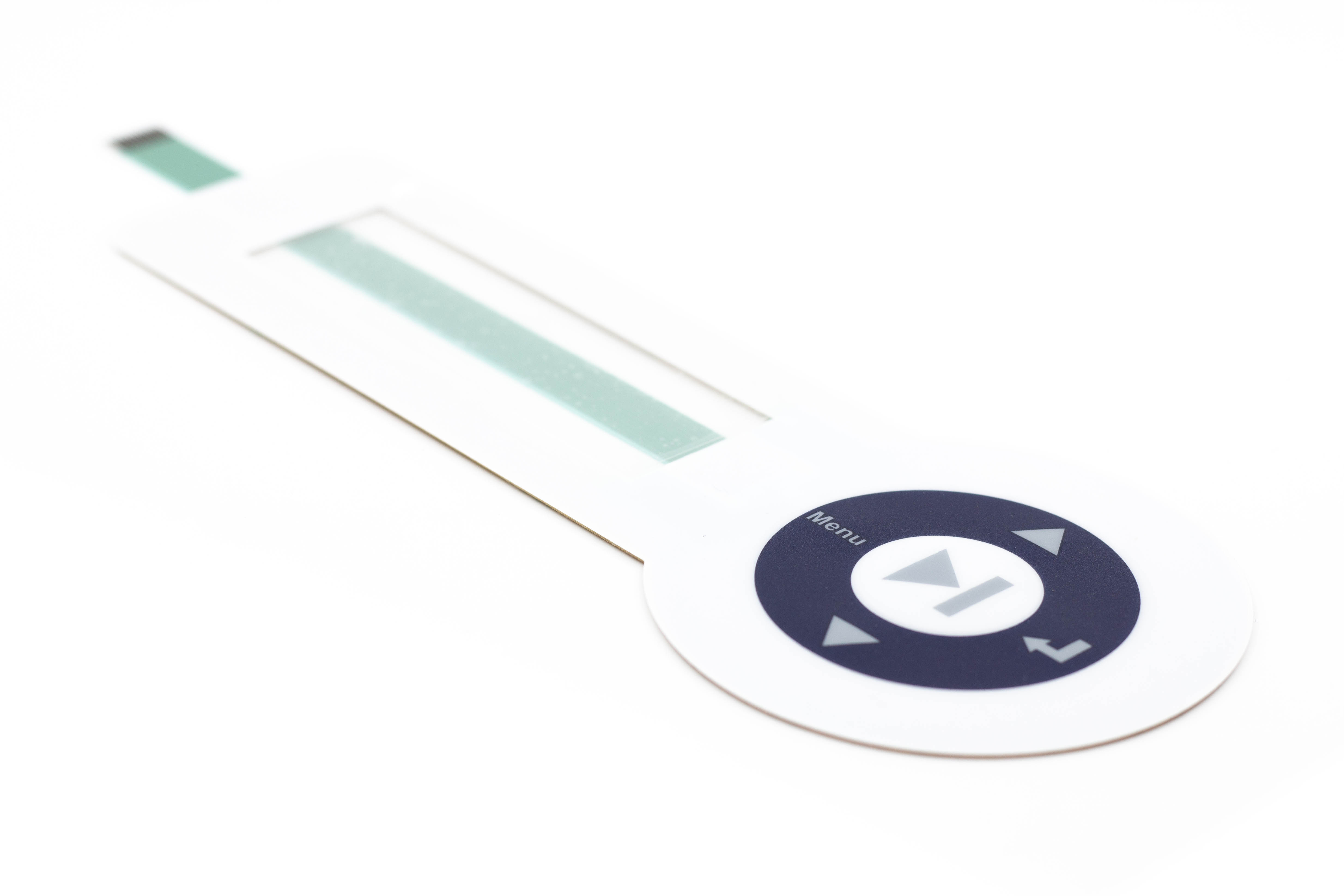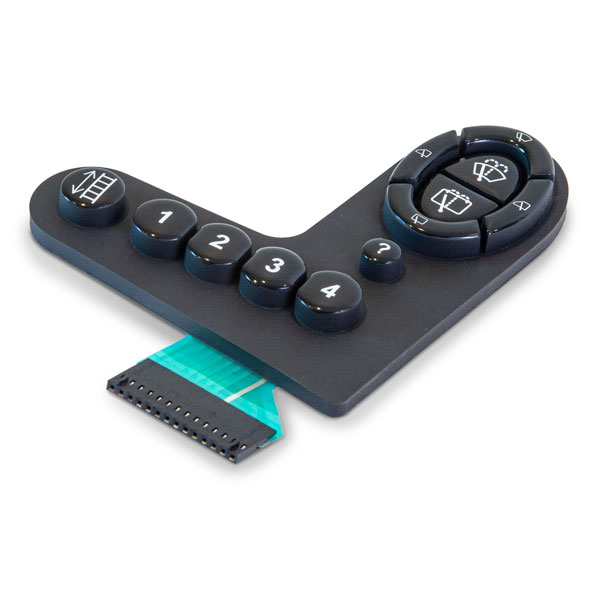Understanding the Importance of Membrane Layer Change in Modern Electronics
Membrane buttons are important components in modern-day electronic gadgets. They offer a mix of capability and style that enhances user interaction. Their resilient and light-weight nature makes them appropriate for numerous applications. As sectors develop, the need for customization and advanced functions expands. Comprehending just how membrane layer switches add to technology reveals their relevance in forming the future of electronic devices. What lies ahead for this innovation?
The Essentials of Membrane Layer Switch Technology
Although usually overlooked, membrane switch innovation plays an essential function in the contemporary electronics landscape - membrane switch. These devices, composed of multiple layers, function as interface for different digital products, ranging from home appliances to clinical tools. A common membrane button contains a graphic overlay, a spacer layer, and a circuit layer, which are carefully constructed to create a functional interface.When pressure is related to the overlay, the circuit layer is completed, allowing signals to be transmitted to the tool. This modern technology is recognized for its convenience, enabling customization in capability, shape, and design to meet particular user demands. Additionally, membrane switches are thin and light-weight, making them suitable for applications where area is a premium. Their sturdiness and resistance to environmental elements additionally improve their charm, ensuring they can stand up to severe problems while maintaining performance. Overall, membrane layer button technology is integral to producing reliable and easy to use digital devices

Key Advantages of Membrane Layer Switches
Membrane switches over deal several essential benefits that make them a recommended selection in various electronic applications. Their design enables for a portable form element, allowing suppliers to develop sleek and lightweight tools. Furthermore, membrane layer switches are resistant to dirt, dampness, and chemicals, which enhances their durability and durability in requiring environments. The responsive responses supplied by these switches can boost user experience, making them intuitive and simple to operate.Furthermore, membrane switches can be customized with diverse graphics and shades, allowing for unique branding opportunities. The manufacturing process is usually economical, specifically for high-volume production, as it minimizes setting up time and simplifies style. Finally, membrane switches require minimal upkeep, adding to lower total functional expenses. These benefits underscore their expanding popularity in modern-day electronics, where integrity and straightforward interfaces are necessary.

Applications Throughout Different Industries
The adaptability of membrane switches allows their widespread fostering across various sectors. In the clinical field, they are commonly utilized in diagnostic tools and client monitoring systems, supplying a long lasting interface immune to contaminants. The auto market makes use of membrane buttons for dashboard controls, enhancing customer experience with sleek layouts that withstand extreme conditions. In customer electronic devices, they function as control board for devices such as microwaves and coffee manufacturers, providing a straightforward interface that is very easy to clean. The aerospace market uses membrane buttons in cabin controls, where reliability and area performance are critical. Furthermore, the commercial industry leverages these switches in equipment and control systems to assure robust operation in demanding settings. This wide series of applications emphasizes the flexibility of membrane layer buttons, making them integral elements in improving capability and customer interaction across diverse technological landscapes.
Modification and Design Versatility

Future Patterns in Membrane Layer Switch Advancement
Arising trends in membrane button great post to read growth indicate an expanding focus on enhanced performance and combination with clever technologies. As customer need for more advanced electronic gadgets rises, manufacturers are concentrating on developing membrane switches that not only serve fundamental functional duties but likewise integrate attributes like touch level of sensitivity, backlighting, and haptic feedback.Furthermore, developments in materials are anticipated to boost resilience and environmental resistance, making membrane switches suitable for diverse applications in markets such as health care, automotive, and consumer electronics. The integration of capacitive touch modern technology is most likely to come to be find more extra widespread, allowing for sleeker designs and improved individual interfaces. membrane switch.Additionally, the rise of the Internet of Points (IoT) is motivating the advancement of membrane layer changes that can interact wirelessly with other devices, enhancing interconnectivity. In general, the future of membrane button modern technology shows up encouraging, driven by technology and the pursuit of easy to use services
Frequently Asked Concerns
Just How Do Membrane Layer Changes Compare to Traditional Mechanical Buttons?
Membrane switches, being much more space-efficient and providing a sleek layout, contrast with conventional mechanical switches that give tactile responses. The previous commonly feature adjustable graphics, while the last usually guarantee durability and integrity in different applications.
What Materials Are Generally Utilized in Membrane Switch Over Production?
Membrane layer buttons are typically created using products such as polyester, polycarbonate, and published conductive inks. These materials give responsiveness, flexibility, and longevity, making them ideal for numerous applications in digital gadgets and customer interfaces.
Can Membrane Layer Changes Be Fixed or Recycled?
Membrane switches can typically be repaired, particularly if minor concerns develop, such as sticky failure or surface damages. Total reuse is usually limited due to put on and prospective degradation of products over time.
Exactly How Do Ecological Variables Impact Membrane Change Performance?
Ecological elements, such as direct exposure, temperature, and moisture to chemicals, greatly affect membrane switch efficiency. Extreme problems can lead to destruction, affecting responsiveness and long life, inevitably endangering the capability of the device in numerous applications.
What Is the Typical Life Expectancy of a Membrane Layer Switch?
The normal lifespan of a membrane button usually varies from 1 to 5 million actuations, depending on elements such as use regularity, environmental conditions, and the products made use of in production, impacting durability and performance durability. A normal membrane layer button consists of a graphic overlay, a spacer layer, and a circuit layer, which are thoroughly constructed to create a functional interface - membrane switch.When pressure is applied to the overlay, the circuit layer is finished, enabling signals to be sent to the tool. The responsive feedback provided by these switches can enhance user experience, making them user-friendly and simple to operate.Furthermore, membrane layer buttons can be tailored with varied graphics and shades, permitting for one-of-a-kind branding opportunities. As customer need for extra sophisticated electronic devices increases, manufacturers are concentrating on developing membrane layer switches over that not only offer basic operational roles but additionally include attributes like touch level of sensitivity, backlighting, and haptic feedback.Furthermore, improvements in materials are expected to improve resilience and environmental resistance, making membrane changes appropriate for diverse applications in sectors such as medical care, vehicle, and click to read more consumer electronics. The assimilation of capacitive touch modern technology is likely to become extra widespread, enabling for sleeker designs and boosted individual interfaces.Additionally, the rise of the Net of Things (IoT) is prompting the growth of membrane switches over that can interact wirelessly with various other gadgets, enhancing interconnectivity. Membrane layer switches, being extra space-efficient and providing a sleek style, contrast with standard mechanical switches that supply tactile comments
Comments on “Top considerations when choosing a membrane switch for aerospace use”